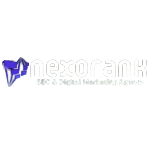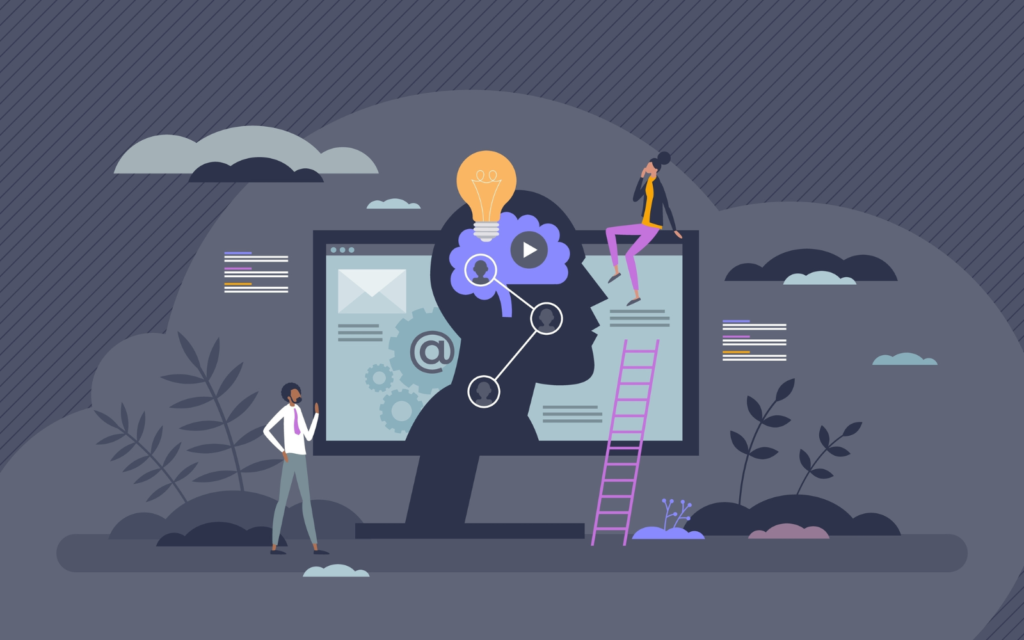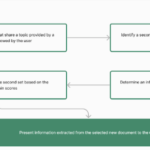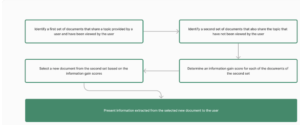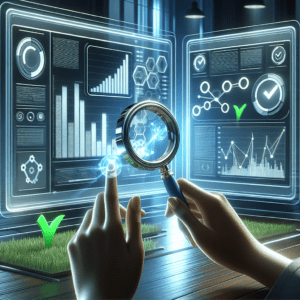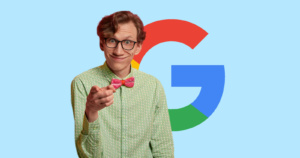PPC ads are at the core of many marketers’ digital media mix, so it is critical to stay on top of new features and ad tech advancements.
The hot topic and major changes involve AI to automate and improve the efficiency of pay-per-click campaigns.
However, it’s unsurprising that AI is not replacing the marketing strategist or PPC manager. On the contrary, the marketing team is more important than ever to provide high-quality manual creative ad assets to the ad platforms to inform the AI machine.
While this is an automated process, the advertiser is at the heart of this, providing the creative strategy, vision, and messaging. You power the AI.
Note: This article focuses on Google Ads due to their market share and volume, but many of these suggestions can be applied to any ad platform.
The AI power component comes into play through “automatically created assets,” where the “asset” is the headline or description of the ad copy. The “manual assets” refers to what the advertiser writes and enters into Google Ads.
Consider:
- Automatically created assets generate new headlines and descriptions continuously to form ad copy that is relevant to the query and ad’s content.
- Automated assets are used alongside and in combination with advertiser manual assets to show the search ad that is predicted to perform the strongest.
- Reporting (asset details report) is available on automatically generated content, and advertisers can remove it if needed.
First, the advertiser must opt in at the campaign level. This is a good thing because there is prep work to be done to get the greatest benefit from AI tools.
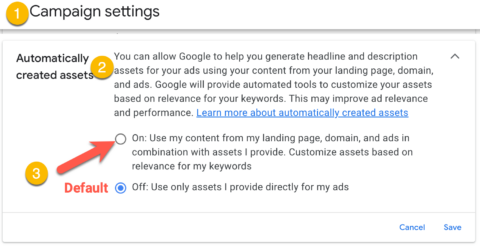 automatically created assets in Google Ads” width=”480″ height=”246″ class=”aligncenter” />
automatically created assets in Google Ads” width=”480″ height=”246″ class=”aligncenter” />
Next, prepare your inputs for AI-driven ads:
- Landing page.
- Manual assets.
- Keywords.
1. Landing Page And Website
One key aspect of getting the most from AI is the landing page and website content. The AI algorithms need content to draw from, and the better the content, the more potential outputs will have.
After providing the URL, Google will find the relevant information on your page to generate ad creative.
Clear and ad-focused content. Clever, flowery marketing language or excessive jargon takes a back seat to concise, fact-based language.
Correct and up-to-date content. This can be a challenge for some smaller advertisers who do not have complete control over frequent content changes without incurring web dev fees. You may want to wait on AI right now if this is the case. For everyone else, be proactive and mindful about writing content for ads. Next, the “reactive” approach is to review reports to determine if web content should be altered or automated assets should be removed. The automated assets will change if the web content changes or assets are removed.
Content alignment. Ensure that the landing page content aligns with the ad copy. Keywords and messaging should be consistent with the search ads to maintain user trust and engagement.
Clear value proposition. Highlight the unique benefits or solutions your product/service offers. Use a compelling headline and subheadline that immediately captures the visitor’s attention.
Write strong CTAs. A common problem is advertisers simply not being clear in their CTAs in ad copy or on landing pages. Use action-oriented language repeated on the page and ad. Stick to one clear CTA. For a refresher, see this post.
Bonus: It is also a good idea to make a long-term plan to permanently change web content to aid AI in the future, as it is here to stay.
2. Manual Assets
The “manual assets” refer to the headlines and descriptions you write and enter into Google Ads.
Since the headlines and descriptions are served in many combinations, it’s important that the assets communicate a cohesive message. Enabling AI will allow automatically generated descriptions to be thrown into the mix.
Headlines: With up to 15 headlines with a maximum of 30 characters, try to assign a strategy to the type and number of headlines. For example, include:
- Brand name: Although your company will appear in the “business name” field, it might not be the brand or product name you need to communicate here. Control the language and use a pin if needed.
- Keywords from the adgroup.
- CTA: ensure this is consistent and consider pinning this headline.
- Feature/benefit.
Descriptions: Up to 4 total, with up to 90 characters per description.
While you want to use keywords, unique headlines, and consider Google suggestions, the ad should ultimately be clear, concise, and persuasive enough to get users to click and convert.
3. Keywords
In search campaigns with automated assets, keywords still matter and inform Google and, ultimately, your customer what the ad is about.
We want to stick with best practices in account structure and keyword selection. The keywords should always be closely connected to your ad and landing page.
If you have not been a perfectionist on this recently, now is a good time to review and evaluate your keywords, keeping AI automation in mind.
A great shortcut: While in the ad creation tool, venture into the ad suggestions area where Google will show you “popular keywords from the adgroup” you can click to add as a headline.
Finally, Performance
- You can see the automatically created assets that were generated and served by reviewing the asset detail report.
- Remove assets you don’t like: under the Responsive search ad > View asset details.
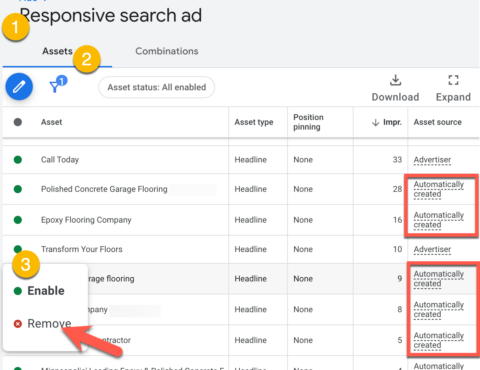
Conclusion
One of the misconceptions about AI in ads and automatically generated assets is that it’s a “set and forget” model that solves problems with ad management resources, time, and performance.
As we can see above, the process to enable AI takes knowledge, strategy, and ongoing management to ensure the messages served to your ideal customers can meet and exceed what is done manually.
This can only be achieved with humans setting it up for success.
Learn more on this topic: Google Ads: A Quick Guide To Every AI-Powered Ad Creative Feature (And What’s Coming Soon)
More resources:
Featured Image: VectorMine/Shutterstock

